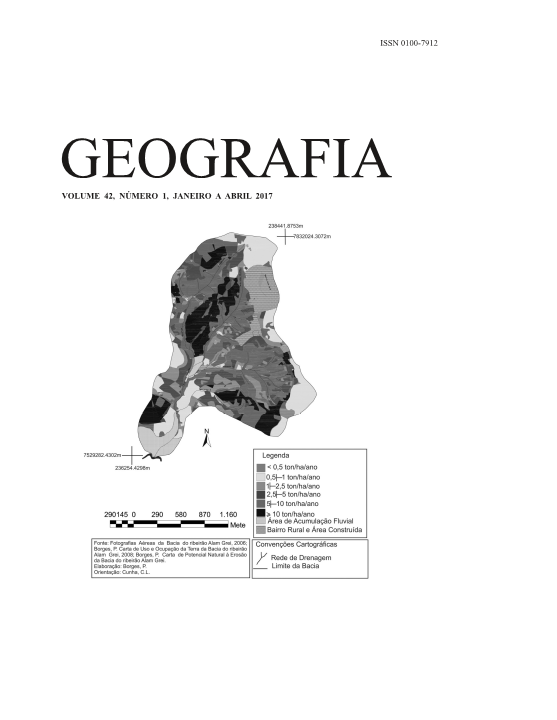MILLING CAPACITY AND SUPPLY COMPETITION IN SUGAR-ETHANOL INDUSTRY IN SÃO PAULO, BRAZIL
DOI:
https://doi.org/10.5016/geografia.v42i1.12672Resumen
After the deregulation of the sugar and alcohol sector, the decision on the location and scale of processing units was transferred to the private sector. Given the competition, the search for raw materials increased substantially and became the key variable in determining the viability of plants. The neoclassical microeconomics indicates that the increase in capacity is the result of a decision to maximize the outcome of firms, especially considering the industrial economies of scale. However, the theory of industrial organization, raises the possibility of the decision on the installed capacity be affected by the competitive strategy of the firm, leading to raise barriers to entry. Thus, plants located in regions with greater competition for sugarcane would work with higher levels of idle capacity, as deterrent to entry of new units. Using techniques of geo-referencing, the research shows that in the traditional sugarcane areas, the installed capacity in recent years far exceeds the availability of raw material. Thus, it is unlikely that plants installed in these regions are operating in an ìoptimalî level grinding. Gains force the hypothesis that excess capacity has the role to impose barriers to entry despite the reduced efficiency of the plantsDescargas
Publicado
Número
Sección
Licencia
Los autores mantienen los derechos de autor y otorgan a GEOGRAFIA el derecho de primera publicación, estando los artículos licenciados simultáneamente bajo la Licencia Creative Commons BY 4.0, que permite compartir y adaptar los artículos para cualquier propósito, siempre que se cumplan los créditos y disposiciones de derechos de imagen, privacidad. o derechos morales. Se puede acceder a otras atribuciones legales en: https://creativecommons.org/licenses/by/4.0/legalcode.en.

Geografia, Rio Claro, SP, Brasil- eISSN 1983-8700 - Licencia Creative Commons BY 4.0,





